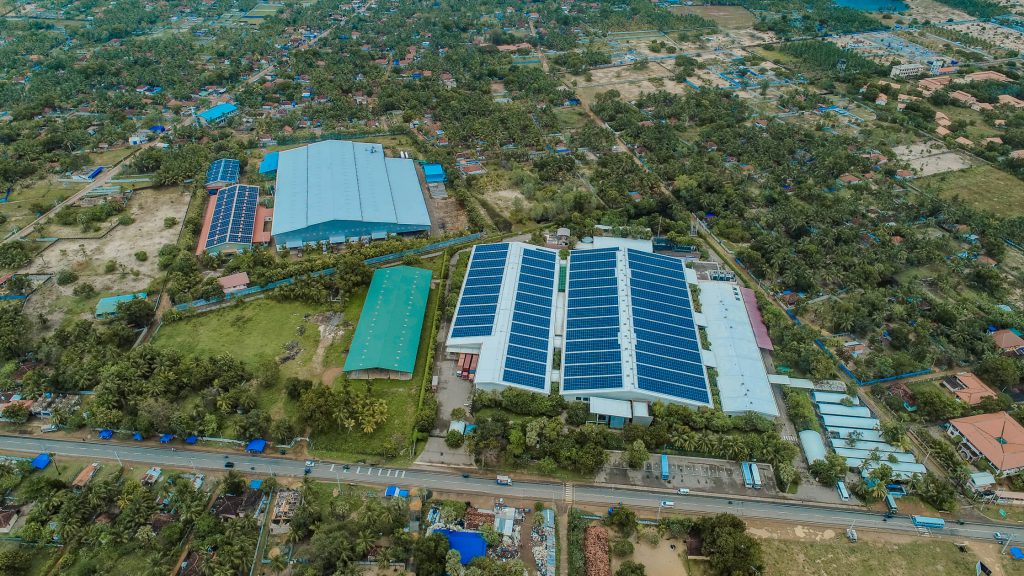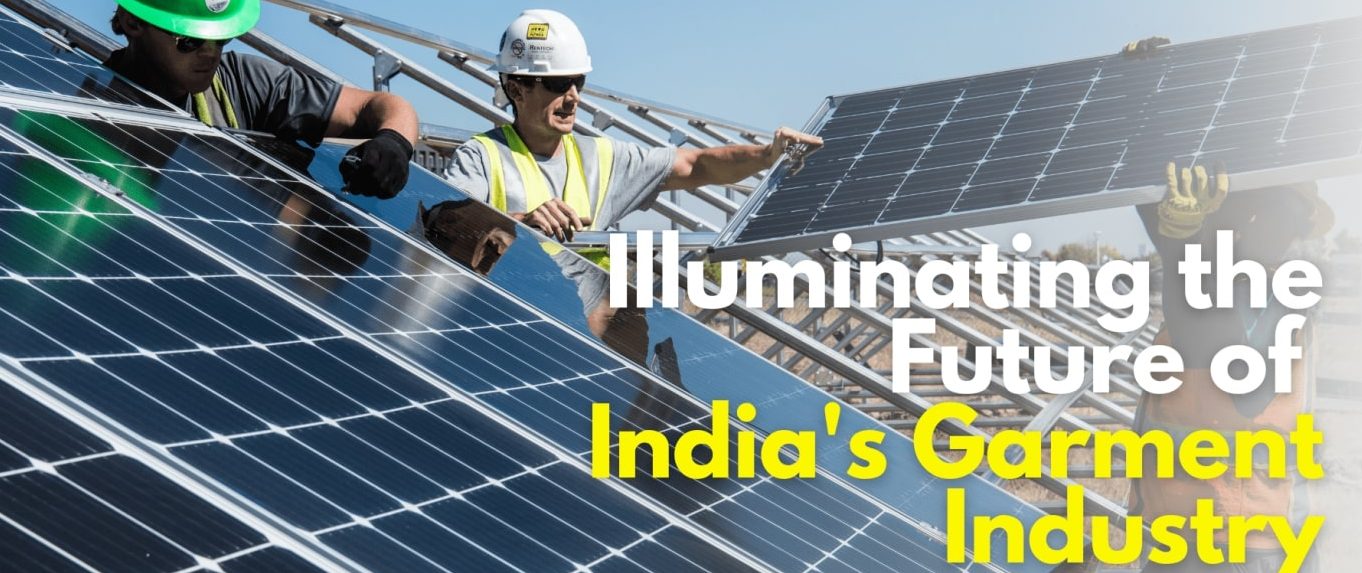The integration of solar power plants in apparel manufacturing marks a vital move towards sustainable production, aligning with global carbon emission reduction efforts. This involves addressing energy-intensive processes, exploring various advantages, and considerations tied to solar installations in apparel manufacturing facilities.
In the current context, challenges arise from widespread fossil fuel use for electricity, contributing to global warming. Over Reliance on oil and gas has caused health and environmental issues. Natural gas emits 50% less CO2 than coal and 25% less than oil. Coal holds 80% more carbon than gas and 40% more than oil, worsening global warming’s impact on temperature and sea levels.
Using fossil fuels poses challenges, including air pollution with sulfur oxides. Particulates can form the troposphere, a smog component. Additionally, the financial burden arises as fossil fuel electricity is costlier than renewables like solar power. Estimated costs for new coal plants are Rs. 228376.75/- per kW, excluding financing, expected to escalate. This exceeds Rs.130.29/- billion for a new 600 MW coal plant when accounting for financing. Fossil fuel spills cause water and land pollution, harming plant and animal life.
Renewable energy, notably solar power systems, gains popularity. Photovoltaic (PV) systems, using diverse approaches, optimize power output, considering economic metrics. Adoption of renewables mitigates fossil fuel-induced predicaments.

Benefits:
With a growing focus on sustainability, garment manufacturers acknowledge their role in promoting eco-friendly practices. Installing solar power plants aligns with this ethos, offering numerous benefits for business and the environment. Here are key advantages in garment manufacturing:
-Reduced Carbon Footprint: Solar power, a clean and renewable energy source, generates electricity without emitting harmful greenhouse gasses. Opting for solar plant installation helps garment manufacturers cut their carbon footprint, mitigating environmental impact from conventional energy sources.
-Cost Savings: Despite the initial substantial investment in solar infrastructure, long-term cost savings are considerable, with solar power systems substantially reducing electricity bills. This financial efficiency contributes positively to the overall sustainability of the garment manufacturing business.
-Energy Independence: Solar power grants garment manufacturing units energy independence, reducing reliance on conventional grids and insulating against energy price fluctuations.
-Government Incentives: Governments worldwide offer incentives, subsidies, and tax breaks, offsetting solar installation costs for garment manufacturers.
-Enhanced Brand Image: Sustainable practices like solar power enhance garment manufacturers’ brand image, attracting an eco-conscious customer base.
-Regulatory Compliance: Solar installations help units comply with environmental standards, reducing the risk of penalties.
-Technological Advancements: Garment units benefit from efficient solar solutions, staying at the forefront of sustainable innovation.
-Community Engagement: Solar initiatives foster positive relationships, making units leaders in environmental responsibility.
-Long-Term Resilience: Solar power ensures long-term resilience, providing a sustainable energy source in crises.
-Educational Opportunities: Embracing solar power offers educational chances, enhancing workforce skills and environmental awareness.
The Solar Power Installation Process:
-Solar Resource Assessment: Determine sunlight exposure by assessing solar irradiance and accounting for potential shading from nearby structures or vegetation.
-Roof Suitability: Ensure the manufacturing facility’s roof can support solar panels, considering structural integrity and available space.
-Orientation and Tilt: Maximize solar exposure by analyzing rooftop orientation and adjusting panel tilt based on latitude.
-Electrical Infrastructure: Check existing electrical systems for compatibility with solar integration, assessing the need for upgrades.
-Energy Consumption Analysis: Size the solar system based on historical energy usage patterns, addressing peak usage times.
-Local Regulations: Investigate local regulations, obtain required permits, and conduct environmental impact assessments before installation.
-Financial Analysis: Assess the financial viability, factoring in incentives, tax credits, and financing options.
-Maintenance Planning: Evaluate system maintenance, plan routine inspections, and consider accessibility and cleaning requirements.
-Energy Storage Integration: Explore energy storage solutions for excess energy during peak sunlight, considering hybrid systems for continuous power supply.
Example: In a notable use of solar technology, ABC Company, a garment manufacturing unit with a strong monthly production capacity of 195,207 pieces, running at 60% efficiency during 8-hour workdays, has embarked on a sustainable energy journey. With approximately 278 sewing machines and 70 non-sewing machines, the company faces a maximum demand electrical load of 411 kWp, requiring a total electrical power of around 457 kWp. Leveraging their available roof space of about 3,267 sq ft, ABC Company strategically installed 196 solar panels, producing 107 kWp of electricity. This initiative marks a significant step toward reducing the company’s carbon footprint and embracing eco-friendly manufacturing practices. The project not only meets energy needs but also positions ABC Company as a leader in environmentally conscious apparel manufacturing. Regarding return on investment, ABC Company expects to see benefits three years after implementing the 196 solar panels in their factory for solar plant installation in apparel manufacturing. The estimated price for a 1kW solar panel in India, with subsidies considered, is approximately 39,000 INR. The top 5 solar providers in India include Waaree Energies Ltd, Tata Power Solar Systems, Vikram Solar, Adani Solar, and Microtek Solar Solutions.
Conclusion:
The garment industry pursues sustainability through solar power plants, aligning with global efforts. Benefits include reduced carbon footprint, financial gains, and energy independence. Embracing solar initiatives enhances brand image. ABC Company exemplifies a successful solar installation process. In conclusion, solar integration ensures long-term resilience, positioning manufacturers as pioneers in sustainability.

dinabandhu mahata
Associate Consultant


Leave a Comment